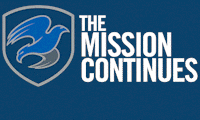7 Lessons from Leaders: Investing in Women Pays Off
Mar 3, 2022

Investing in women unlocks the brightest version of our future. We’ve asked women who lead how to best invest in women and what you can expect in response.

Women leaders bring an authentic identity and perspective to the table when solving problems and leading teams. The 20 years since 9/11 created new opportunities for women to lead— in our military, in our communities, and in our workplaces. Accordingly, we have seen a dramatic shift as women in all aspects of our economy, philanthropy, and government have changed what it means to serve and lead in this country.
There is a growing recognition of the unique contributions that propel success when more voices — including women leaders — are at the table and are being heard. In October, we partnered with NationSwell to explore the lessons we can all learn from the wisdom, experiences, and expertise of women veterans in leadership roles. As part of our partnership, we discussed how these leaders draw from their time as active duty service members to inform how they continue to lead at their organizations and serve their local communities. Joining us at our table were Mercedes Elias, Marine Corps veteran and coCEO of AmeriVet Securities, Michèle Flournoy, co-founder and Managing Partner of West Exec Advisors, and Juliana Vida, Navy veteran and GVP and Chief Strategic Adviser for Splunk. Holly Kuzmich, Executive Director of the
George W. Bush Institute, moderated the event.
If you’re reading this, you’re probably looking for insights, actions, and strategies for how to bring women to the table, support their leadership, and invest in their success. Here are seven lessons from women who lead on how to make that happen:
1. THE VALUE-ADD GOES FAR BEYOND GENDER DIVERSITY REPORTS
Though the ethical argument for gender diverse leadership is clear, the business incentive is, perhaps, even clearer. Companies with women in leadership positions have consistently higher profit margins than those without — and the benefits don’t stop at your bottom line. Women veterans are natural fits for these leadership positions: According to the Department of Veterans Affairs, women veterans are more likely to hold a position of professional leadership and a college degree than their nonveteran counterparts.
“There’s a lot of reasons for women to be included and be elevated into leadership positions,” Kuzmich said. “When you invest in women, it leads to improved access to education and health care for their families. Women’s inclusion in leadership promotes stability. We know that peace agreements are more likely to stick when women involved are negotiating them. We know that when women have leadership roles in companies, they tend to be more profitable. We know that women are more likely to cross party lines and find common ground.”
2. THERE ARE NO QUICK FIXES FOR MEANINGFUL INVESTMENT IN WOMEN’S ADVANCEMENT
Despite the business case for more women in leadership, the promotion of women into leadership roles continues to lag. And according to the VA, women who have served in the military have been referred to as “invisible veterans” because of how often their contributions have gone uncelebrated. The women veteran leaders around our table made the case for taking a systematic approach to supporting a diverse pipeline of women — and made the case for women who have served in the military as a necessary recruitment pool for the American workplace. “Women have made progress in the sense that more women have made it through — not always all the way to the top, but are successfully breaking different glass ceilings with some still to go,” Flournoy said. “But what’s been missing is a more systematic approach. If you’re going to cultivate a talent pipeline, you have to look at the pipeline as a whole.
Ask yourself, ‘How are you recruiting a diverse class coming in? How are you mentoring and sponsoring to keep that diversity as people go through the experience? How do you ensure equitable opportunities for promotion and leadership? How do you create more family friendly environments to keep people when they’re going through early parenthood? How do you ensure that women and diverse candidates have the same opportunities for mentorship and sponsorship and leadership as everybody else?’”

3. IT’S IMPORTANT TO OFFER FAMILY BENEFITS TO WORKERS REGARDLESS OF GENDER
The gendered stigmas around family care benefits prevent all workers from taking advantage of them. In the wake of COVID-19, which saw the American worker struggle with work-life balance in new and precedented ways, the women veteran leaders around our table voiced the need for organizations around the country to make those benefits available to all. “It’s really important when companies can offer benefits that traditionally have been only for women and offer those to men as well,” Vida said. “It normalizes those opportunities for family leave or parenthood leave.
If only women are getting those kinds of benefits — or perceived good deals — by other people in the organization, then it continues to keep a divide between how women and men are treated in a workplace. But when men are offered parent leave as well as women, that starts to normalize those family responsibilities, which still can be a really tough point of contention. When people disagree that women should take their rightful place in senior levels in industry, they say, ‘Well, they have to take time off to raise their families.’ Well, if men are doing that too, then it becomes more fair, and it normalizes the human elements of having a family — and being a parent — in ways that we didn’t have in the past.”
4. WOMEN CATALYZE HIGHER EQ WORKPLACES
Emotional intelligence — colloquially referred to as an “EQ” — is a top quality in an effective workplace leader. And though the notion that women have a higher emotional intelligence than men isn’t true (or, at least, it’s overstated), studies show that women are more likely to stay emotionally rooted in a situation than their male counterparts, whereas men are more likely to react and quickly move on. Organizations benefit from having leaders who empathize and rationalize differently from one another. But the unique strengths of women leaders might also explain why women veterans do so much to make sure others feel heard in the workplace: their experience being vastly outnumbered by men — especially in leadership positions in the military.
“I think empathy is a strength,” Elias said. “You have a generation of people coming into the workforce who want feedback, who want authentic relationships, who want opportunity to grow. I think women, because we’re so self-aware most of the time — many of us being the only one in the room — we want to make sure that others don’t feel that discomfort. We are a little bit better about helping to connect with employees, helping to communicate with them, listening to their fears and their apprehensions towards things.”
5. WOMEN CATALYZE MORE INCLUSIVE WORKPLACES
Women represent under 18% of active duty service members. They’re approximately 10% of the veteran population. And according to the women leaders at the event, the experience of being vastly outnumbered by men is part of why women — and especially women veterans — strive to create inclusive workplaces. “When you’ve had the experience of a leadership climate that’s not inclusive — that doesn’t give you a seat at the table or a voice in the conversation as you make your way to become a leader in your own right — you’re much more likely to try to create an environment where people of diverse backgrounds and perspectives can have a voice,” Flournoy said. “Leaders who really listen, and who create a leadership climate that not only tolerates dissent, but solicits dissent in different perspectives and different points of view, they make better decisions.”

6. IGNORING CONTRIBUTIONS BY WOMEN LEAVES “HALF THE TALENT POOL OFF THE TABLE”
Experts say that the “post-COVID” American economy is a workers’ economy, one where workers are newly empowered to seek opportunities that are right for them while organizations are doing everything they can to recruit and retain top talent. “At a time when it’s really important for the U.S. to rise to the occasion — the challenges of COVID, economic recovery, the more competitive international environment — we can’t leave half the talent pool off the table,” Flournoy said. “We have got to draw from all that America has to offer, and our diversity should be a great source of strength. We need to draw on the talents of every American to be able to recover domestically and lead internationally going forward. I think it’s imperative that we figure out how to really open the floodgates, and let everybody contribute.”
7. WHEN WE RECOGNIZE THE SUCCESS STORIES OF WOMEN, WE MEET OUR COUNTRY’S HIGHEST IDEALS
When you support and amplify the achievements and leadership of marginalized and underrepresented communities, other people in those communities start to see themselves as leaders, or doing new kinds of work from which they felt precluded because of their identity. “I think it’s important to tell women’s stories particularly for younger generations, because when people don’t see somebody that looks like them, that is their same skin color, that is their same sexual orientation, that is their same gender, they don’t believe that those opportunities are possible for them,” Elias said. “Younger generations see other women lead and achieve, and they think, ‘She did it. I can do it, too.’ The more we talk about it, the more we share these stories, [then] these younger generations see that different career paths are open that were closed before. We may not see the impact of this now, we may not see that impact during our lifetime, but we will definitely see it for generations to come.”
—
To learn more about NationSwell and join their network of social impact change-makers, go to nationswell.com
 You are successfully logged in.
You are successfully logged in.





